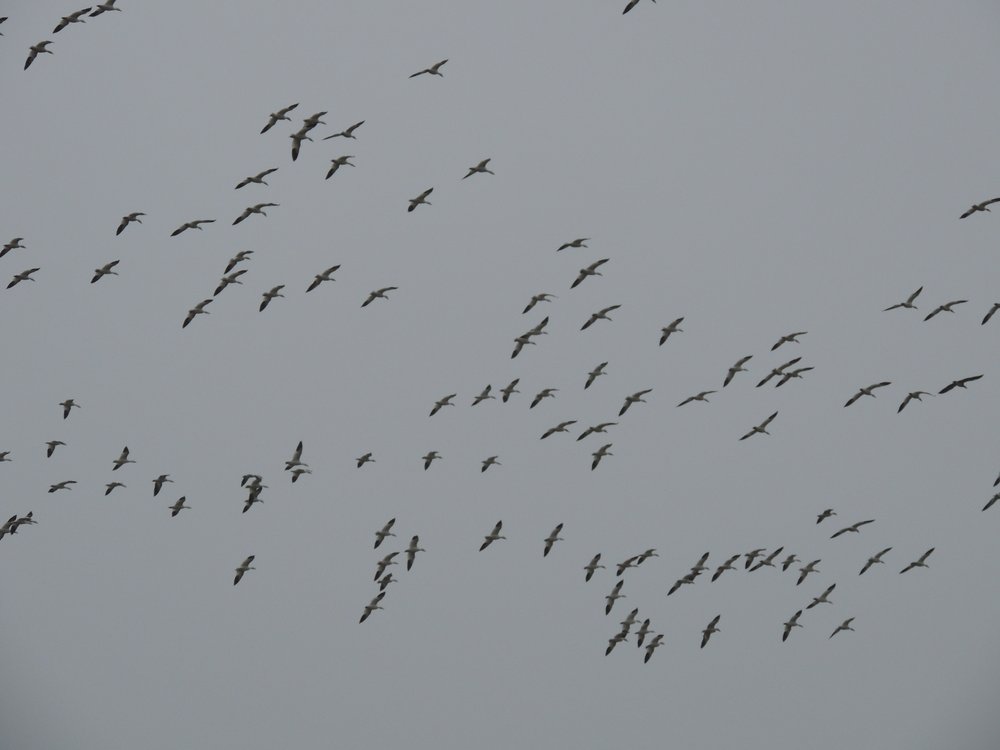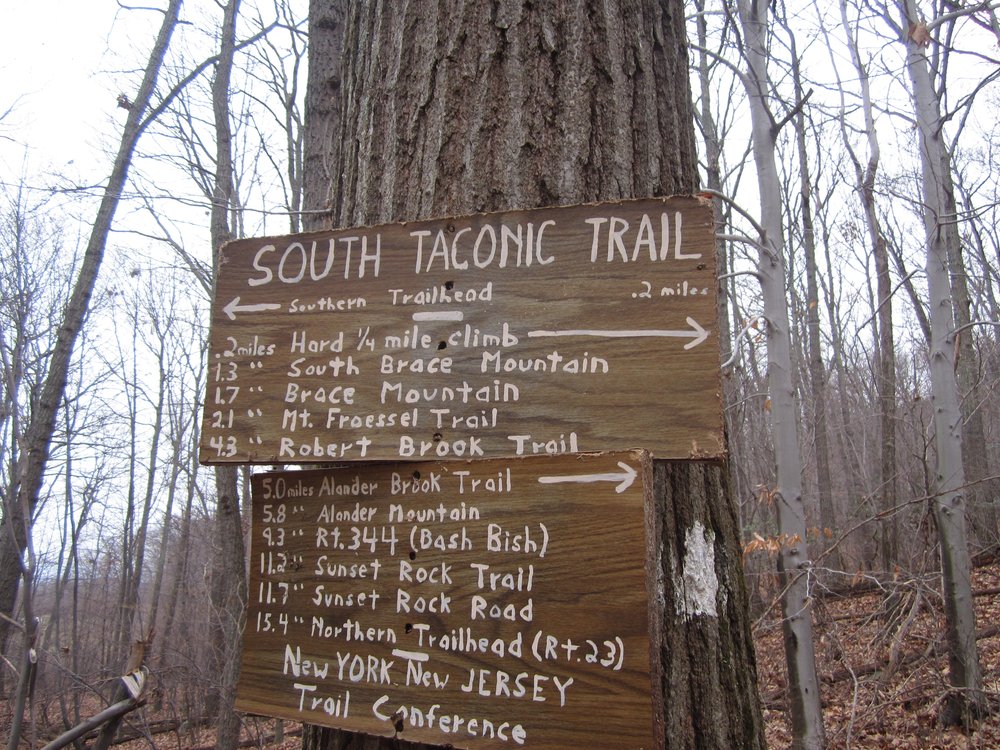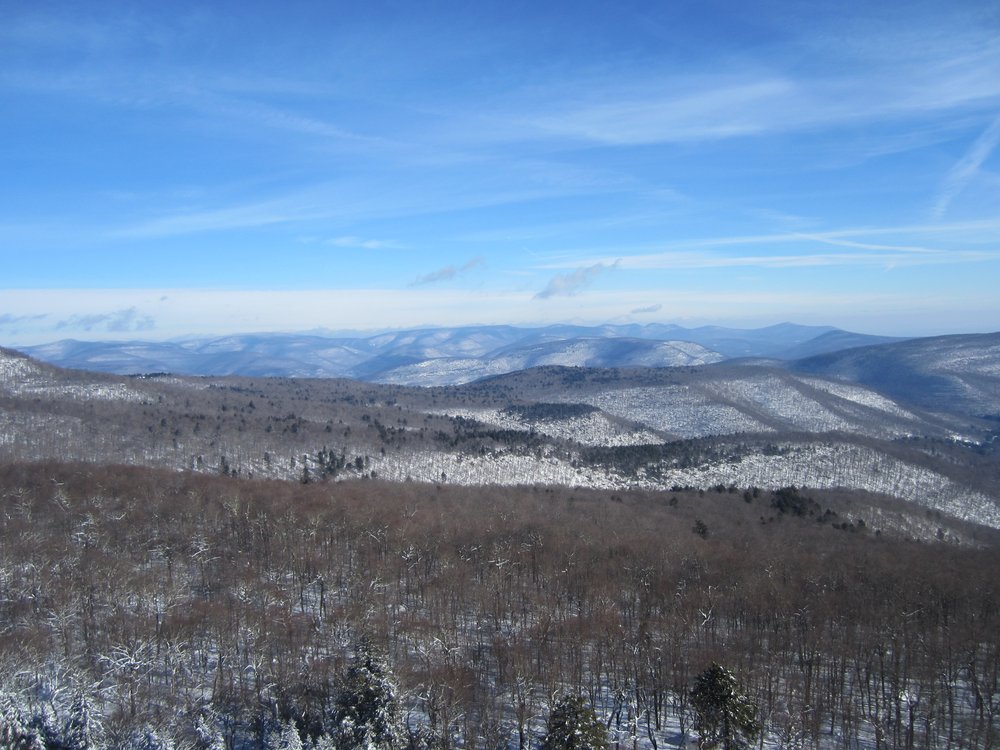
I had wandered my way eastward to this trailhead, stopping at one of my favorite farms to admire flocks of Snow Geese coming in for whatever leftover corn they can find on their route south. Since I didn't know when or if I was going to hike this trail, I had not let anyone know my plan. I know this is not smart--you should always let someone know your hiking plan. But I'm feeling cut loose in many ways, so I was out there, wanting to walk into that sense of alone.
It's a strange feeling, this sense of being unaccounted for. It’s not that there is no one to care; it’s that no one is allowed to care. This could lead to a sense of loneliness or alternatively, to a slight euphoria, the elation of freedom. It's the later feeling that took hold as I started up the steep trail.
I don't mind that the trail is steep, but I do mind that it's covered in leaves; it was hard to tell what might give and what would take my weight. I slipped a lot, reaching for tree limbs to stabilize me. As I climbed, I felt my heart thumping in my chest. I liked how solid it felt, pushing against my ribs.
Three men and two dogs appeared on the trail above me. They were sliding down the trail, hanging onto trees and rocks, sitting down to maneuver over the larger boulders. I pet the collie dog’s long, fine nose and asked her if she wanted to join me. The men laughed as we continued in our opposite directions. As I turn and briefly watch them slide down to the parking area, I thought: Now I am out here alone.

While we climbed in the canyon, we had some friends who--when they were not stoned--knew where we were. It was small but real comfort. But once we were in the park, we were on our own, in this day long before cell phones. Once a week I wrote to my parents to tell them where I was and what I was doing. I lied a lot in those letters. They thought I was sharing an apartment with friends; I was sleeping in a parking lot. I told them I was eating well; we had rice with powdered soup mix most nights. I wondered how long it would take before my parents reacted to the fact they hadn't gotten a letter. And then what would they do? Start searching the state of Colorado? What I realized is that we could disappear and it would be weeks before anyone would sound the alarm, come looking for us. It was a strange thought to have at age eighteen but it was a strong and unnerving one. Perhaps it arose because Munch and I were so lost that summer—in our lives and on the rocks--and had a lot of what we jokingly called epics. But it was also because I had a deep sense no one was paying attention. My father was immersed in writing a novel, my mother absorbed in her translation work. Then, I did want someone to care.

A wind picked up. It gusted over the top of the mountain chilling the sweat on my back. I stopped, drank some water, pulled on a hat. My binoculars dangled at my stomach, but I hardly had use for them. I pished at a squeak from the bushes and a Black Capped Chickadee obligingly appeared to keep me company. They win for most inquisitive, cheerful bird. Down in the valley I could see a long marshy area, which led to a pond, dotted with hundreds of something—ducks, geese—that were too far off to identify.
At the summit of South Brace rests an enormous rock cairn. On clear views there would be views into Connecticut, Massachusetts, New York. Instead, the wind kicked up, gusts that smelled like a storm, like bad weather. I kept on down the trail heading for the summit of Brace and after a hundred yards stopped. I pulled out the map and calculated how far I had to walk to the summit. It seemed ridiculous not to get there, but I didn’t want to get caught out in a storm, adding rain or snow to my slippery descent. I turned around and headed back down the trail.
In Rocky Mountain National Park, Munch and I headed for an area known as Lumpy Ridge. We didn’t have a guidebook, but rather a piece of paper with a few notes on it. “The Book,” “Pear Buttress,” “Sundance.” These were the names of the hunks of granite that soared several hundred feet into the thin air. “Do you think this is the Book?” we would ask each other. But on one day we did a climb named “J-crack,” an unmistakable crack, shaped like a J in the middle of a vast granite wall. No one knew where we were, but for one long day, we knew where we were. And that was a relief.
I was just nearing the descent of the steep section when my ankle buckled under me. I stumbled. The pain shot through my ankle. I sat on a boulder and rested. I drank some water, ate the peanuts I had brought with me. I wiggled my ankle to see if the pain remained.
When I was twelve, I sprained an ankle on the summit of Mount Nittany, which shadows my hometown of State College. College students partying at the summit came to my rescue. They fashioned a stretcher out of tree limbs and denim jackets—this was the early 70s when everyone wore a denim jacket. Four young men hoisted the improvised stretcher and carried me the mile and a half to the car. I felt foolish and they felt heroic.
I knew that no one was going to come along and carry me down this mountain. And I knew I didn’t need that. This was a simple twist, the pain perhaps more imagined than real. But as I sat there I went through what I would do if I had to spend the night in the mountains, how I would set up a bivouac, how I would ration my water. It was when I started to imagine how cold it would get—I could hear the water of the iced-over waterfall—that I stood up and weighted my foot.
My first steps made me wince, but as I continued on, my ankle warmed and the pain dulled. I moved slowly, slithering over rocks, grabbing tree roots to help me down. And this story ends like hundreds before it, with me arriving too soon back at my car, and driving home warm and safe, the pull of exercised muscles overriding the emotions of the day, leaving me happy.